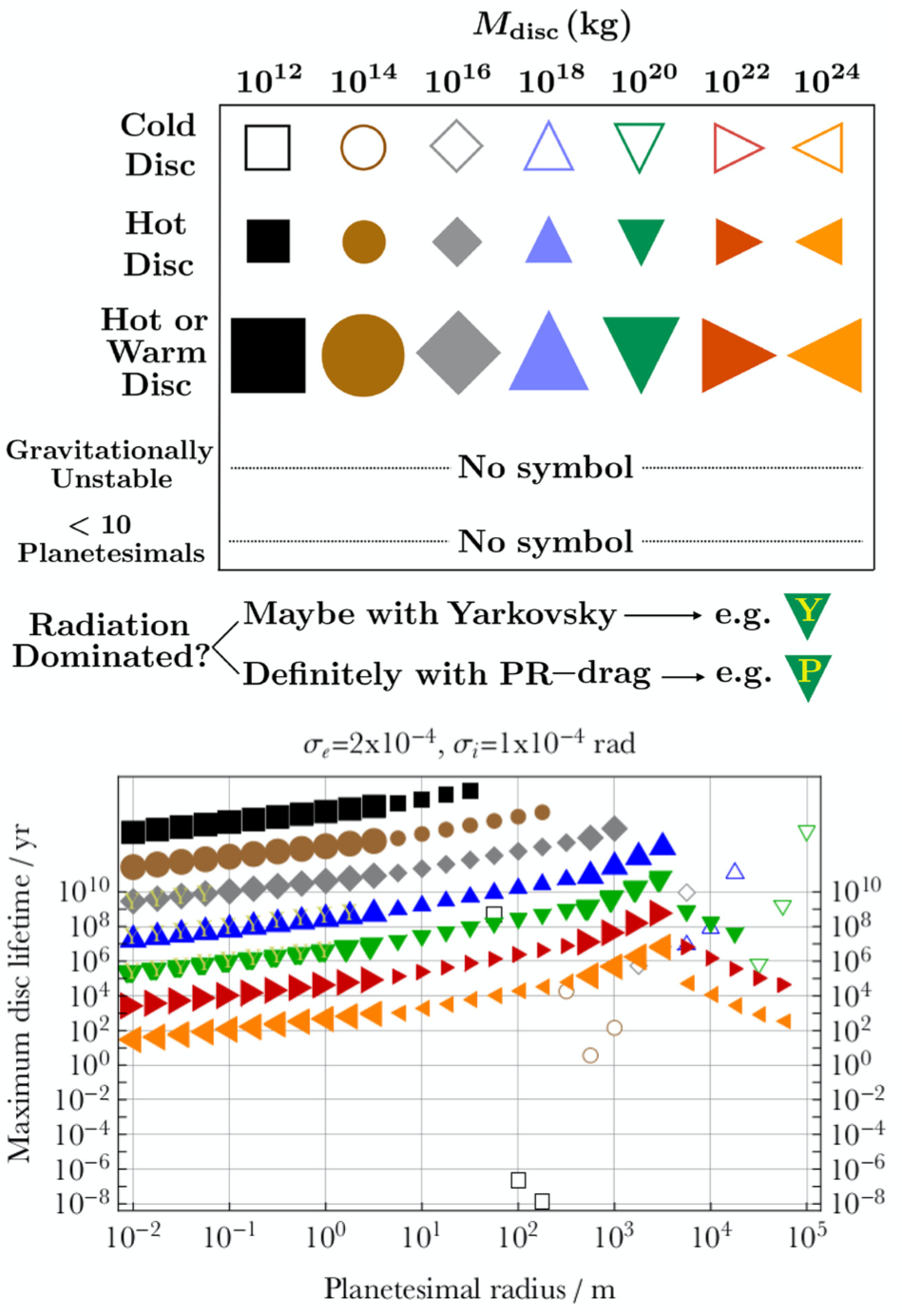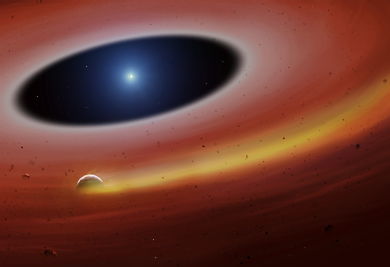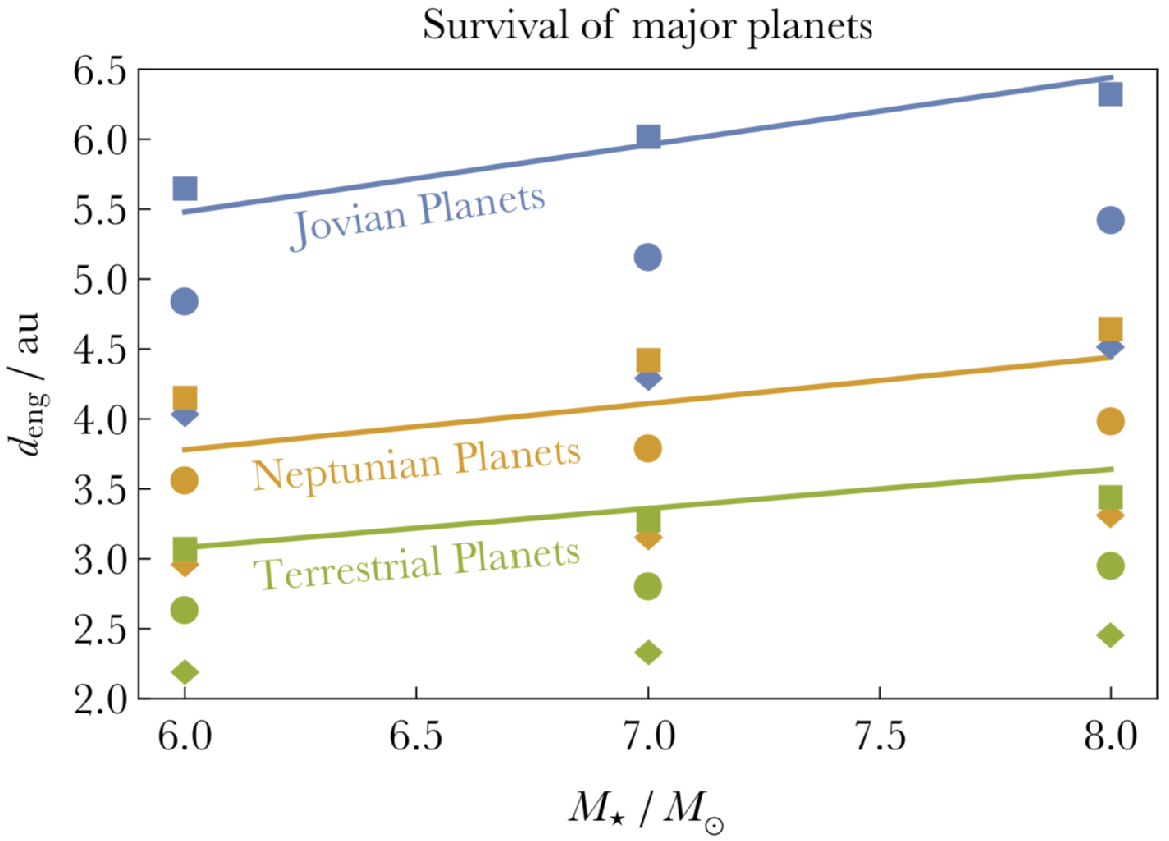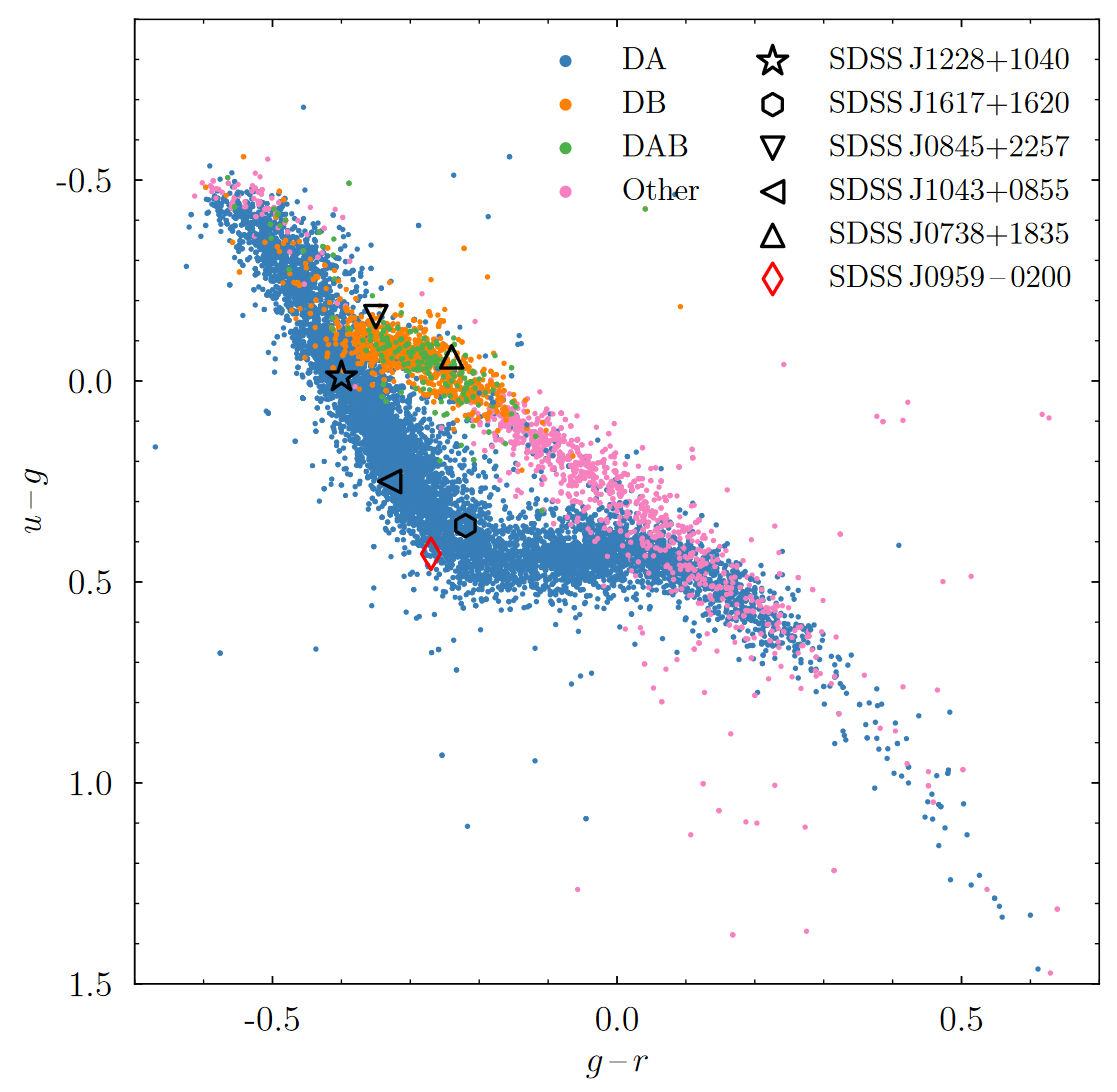Research News & Highlights
The liftetimes of planetary debris discs around white dwarfs
Dimitri Veras and Kevin Heng

The lifetime of a planetary disc that orbits a white dwarf represents a crucial input parameter into evolutionary models of that system. Here we apply a purely analytical formalism to estimate lifetimes of the debris phase of these discs, before they are ground down into dust or are subject to sublimation from the white dwarf. We compute maximum lifetimes for three different types of white dwarf discs, formed from (I) radiative YORP break-up of exo-asteroids along the giant branch phases at 2-100 au, (II) radiation-less spin-up disruption of these minor planets at R⊙, and (III) tidal disruption of minor or major planets within about R⊙. We display these maximum lifetimes as a function of disc mass and extent, constituent planetesimal properties, and representative orbital excitations of eccentricity and inclination. We find that YORP discs with masses of up to 1024 kg live long enough to provide a reservoir of surviving cm-sized pebbles and m- to km-sized boulders that can be perturbed intact to white dwarfs with cooling ages of up to 10 Gyr. Debris discs formed from the spin or tidal disruption of these minor planets or major planets can survive in a steady state for up to, respectively, 1 or 0.01 Myr, although most tidal discs would leave a steady state within about 1 yr. Our results illustrate that dust-less planetesimal transit detections are plausible, and would provide particularly robust evolutionary constraints. Our formalism can easily be adapted to individual systems and future discoveries.
Heavy metal fragment survives destruction from dead star
Chris Manser et al.
 Many white dwarf stars show signs of having accreted smaller bodies, implying that they may host planetary systems. A small number of these systems contain gaseous debris discs, visible through emission lines. We report a stable 123.4-minute periodic variation in the strength and shape of the Ca II emission line profiles originating from the debris disc around the white dwarf SDSS J122859.93+104032.9. We interpret this short-period signal as the signature of a solid-body planetesimal held together by its internal strength.
Many white dwarf stars show signs of having accreted smaller bodies, implying that they may host planetary systems. A small number of these systems contain gaseous debris discs, visible through emission lines. We report a stable 123.4-minute periodic variation in the strength and shape of the Ca II emission line profiles originating from the debris disc around the white dwarf SDSS J122859.93+104032.9. We interpret this short-period signal as the signature of a solid-body planetesimal held together by its internal strength.
Constraining planet formation around 6-8 solar mass stars
Dimitri Veras, Pier-Emmanuel Tremblay, J. J. Hermes, Catriona McDonald, Grant Kennedy, Farzana Meru and Boris Gänsicke

Identifying planets around O-type and B-type stars is inherently difficult; the most massive known planet host has a mass of only about 3 solar masses. However, planetary systems which survive the transformation of their host stars into white dwarfs can be detected via photospheric trace metals, circumstellar dusty and gaseous discs, and transits of planetary debris crossing our line of sight. These signatures offer the potential to explore the efficiency of planet formation for host stars with masses up to the core-collapse boundary at ≈ 8 solar masses, a mass regime rarely investigated in planet formation theory. Here, we establish limits on where both major and minor planets must reside around ≈ 6-8 solar masses stars in order to survive into the white dwarf phase.
The frequency of gaseous debris discs around white dwarfs
Chris Manser et al.

A total of 1-3 per cent of white dwarfs are orbited by planetary dusty debris detectable as infrared emission in excess above the white dwarf flux. In a rare subset of these systems, a gaseous disc component is also detected via emission lines of the Ca II 8600 Å triplet, broadened by the Keplerian velocity of the disc. We present the first statistical study of the fraction of debris discs containing detectable amounts of gas in emission at white dwarfs within a magnitude and signal-to-noise ratio limited sample. We select 7705 single white dwarfs spectroscopically observed by the Sloan Digital Sky Survey (SDSS) and Gaia with magnitudes g ≤ 19. We identify five gaseous disc hosts, all of which have been previously discovered. We calculate the occurrence rate of a white dwarf hosting a debris disc detectable via Ca II emission lines as 0.067 ± ^{0.042}_{0.025} per cent. This corresponds to an occurrence rate for a dusty debris disc to have an observable gaseous component in emission as 4 ± 24 per cent. Given that variability is a common feature of the emission profiles of gaseous debris discs, and the recent detection of a planetesimal orbiting within the disc of SDSS J122859.93+104032.9, we propose that gaseous components are tracers for the presence of planetesimals embedded in the discs and outline a qualitative model. We also present spectroscopy of the Ca II triplet 8600 Å region for 20 white dwarfs hosting dusty debris discs in an attempt to identify gaseous emission. We do not detect any gaseous components in these 20 systems, consistent with the occurrence rate that we calculated.
